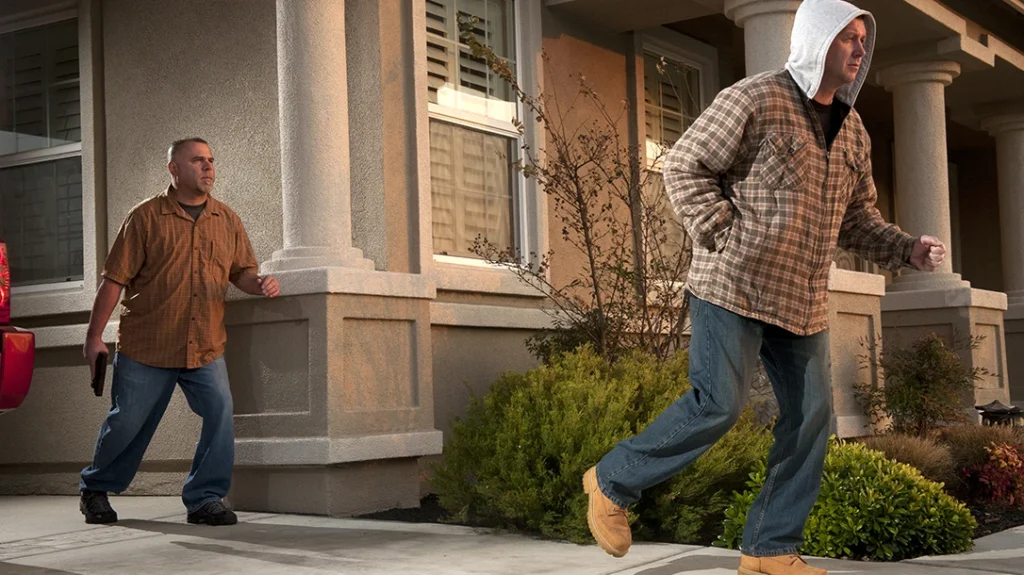Lots of scary stuff happens when the lights go out because darkness invites mischief and debauchery. We’d all love to be creatures of the night, capable of stalking prey like a jungle cat. But for us humans, that simply won’t happen. However, we can prepare for darkness. We can train during periods of limited visibility and carry items, such as a self-defense flashlight, on us that are battlefield multipliers. We can also prepare our gear and mindset to ensure that we are not victimized when shit goes bump in the night.
Take your home, for instance. Are you prepared to illuminate a would-be douchebag who’s got eyes on your wears? If something goes bump in the night, escalation of force must be considered. We can’t go assaulting the objective all sua sponte. If you need to investigate, take your flashlight and leave your home’s lights off. If there is an attacker in your lair, you want him to stay in the dark. You know your real estate and can navigate it in the dark. But we must have the capability of lighting that attacker up like a neon sign so we can identify him.
Advertisement — Continue Reading Below
Self-Defense Flashlight Considerations
When it comes to lumens — a measure of the total quantity of visible light emitted by a source — more is not always better. Sometimes enough is enough. Too much light can be a double- edged sword, especially indoors. The reflection off of walls and other surfaces can broadcast your position as well as your adversary’s. As far as self-defense flashlight selection goes, there is a plethora to choose from. Both weapon-mounted lights and stand-alone flashlights are personal items. Whatever you choose must operate properly when needed, turn off when not needed and be intuitive in operation. It should not ever turn on accidentally. An accidental discharge of light can be detrimental to your longevity.
Too often, I hear of folks who use a weapon-mounted light but no hand-held light. Suffice it to say that I don’t think this is prudent. My first line of defense in darkness has always been my handheld light. Whether I am investigating an ally, walking my wife to her car, helping an old lady find her keys in a parking lot or signaling to someone, my handheld is ready to deploy and employ. I simply cannot do these things with a weapon-mounted light. So it’s best to have both.
When it comes to employing your handheld light, there is no right answer as to where you should hold it. Once again, this is a personal preference. There is much debate over this. Some say to hold it high in your support hand, opposite your firing hand. The reasoning behind this is that an adversary is most likely to shoot at your light. But this thinking cracks me up because over 90-percent of adult males are right-handed. And if they suck at shooting, those same guys will typically miss low and left. So, if they aim for a light that is high and left and miss, you’ll get hit right in the face.
Advertisement — Continue Reading Below
I prefer to use my cheek as an index for my support hand while holding my flashlight, sort of in a fighting stance, while firing with my strong hand. This of course requires practice. I am confident in my abilities to fire with just my hand, in succession, at distance.
Another hot topic of debate comes with sights. There are those who are adamant about fiber-optic sights and those who aren’t. Once again, this is really a personal preference. Your sights have to work for you. I prefer tritium sights for my carry guns instead of fiber optics. A good set of night sights makes it easier to acquire a target during darkness or EENT (end evening nautical twilight). If there is a bit of ambient light, you may be able to discern and discriminate without the use of a white light. Although I love them on the range, fiber-optic sights do not work for me in the darkness.
Using Cover
We’ve all heard it before: “Never crowd cover!” But you must determine if you need to crowd your cover or not based on the situation, not on what some dude told you. Try this: Back up from cover in your home. Use your handheld light and illuminate through a doorway. Have someone stand in that room. Ask if they can identify you. Now crowd the cover, illuminate them and ask them the same question. Try this with your vehicle, especially if it’s white. Backing up from cover and illuminating over the hood will light you up like a luminaria. There are times to crowd and there are times to defend from areas of defilade. You must make that determination based on the situation.
Advertisement — Continue Reading Below
Being able to discriminate in the darkness is absolute. Nothing would be worse than taking down an “intruder,” only to find that they’re victims of circumstance. This type of unfortunate situation has happened before and will continue to happen. I mean, what if your neighbor on an Ambien-induced sleepwalking trip stumbles into your home looking for a sandwich? Or a teen happens to walk into your home, mistakenly thinking it’s his friend who actually lives next door? That’s why every gun owner needs a self-defense flashlight. As responsible and trained gun handlers, we are not in the business of indiscriminate fire. We must be able to fire with impunity.
This article was originally published in Combat Handguns July/August 2019. To order a copy, please visit outdoorgroupstore.com.
























